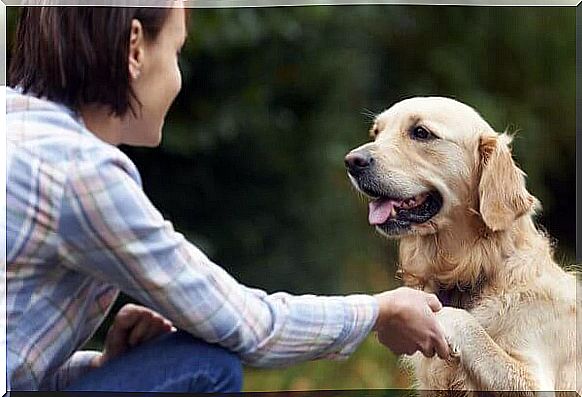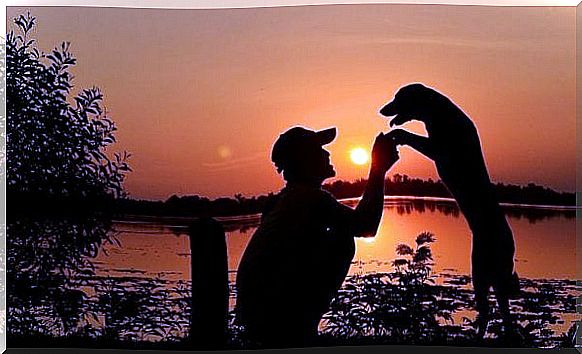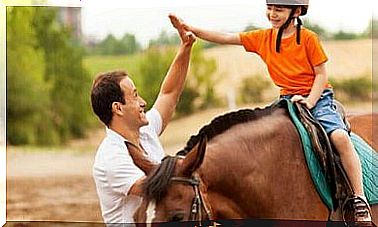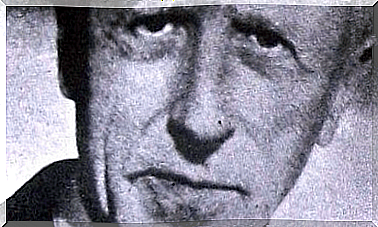How Do Dogs Recognize Faces?

Dogs are those unique animals that, when well behaved, represent an inexhaustible source of friendship and love. They are always ready to play, to accompany you and to spend time with you. They are the first to notice when you get home and are often the most excited about it. You may have been absent for five minutes and when you come back they’ll give you as much affection as if you’ve been away for years.
They have sensitive ears and an extremely good sense of smell, but also good eyesight. Seeing only plays a minor role for them, but they do make use of this sense, especially when they are in motion. They continue to use it to recognize people, and in this article we’re going to try to explain how they do that.
“When properly trained, the dog can be a man’s best friend.”
Corey Ford

How do we recognize faces?
For humans , visual face recognition is a process that happens quickly and efficiently in the brain. Not only is this process remarkable because it is related to long-term memory, it is also special because it is falsely selective. In addition, there is even a very special area in the temporal cortex, which is used to recognize faces.
What do we mistakenly mean by the term selective? Unless you are Japanese and do not live in an area with a high population of Japanese, the facial features of a group of Japanese people will appear very similar to you. You may even feel like you can confuse many of them with one another. That goes for both Japanese men and women.
This is not because their bodies are less different from one another than is the case with people you can more easily tell apart, but because you are not used to distinguishing their faces. This is in large part due to the fact that it was of little interest to your ancestors to be able to distinguish between two Japanese people, and neither is it really, apart from exceptional cases, for you.
Before we get into the canine world, we’d like to point out that humans even have a facial recognition disorder known as prosopagnosia or facial blindness.
If a dog doesn’t come to you after looking at you in the face, you should go home and examine your conscience.
Woodrow Wilson
How do dogs recognize faces?
Dogs usually look up at us from below, and if you look back for a few seconds, they usually tilt their heads slightly to one side, as if asking what you want. Face recognition is one of the most advanced social behaviors that dogs display towards people.
From an evolutionary perspective, it makes sense to believe that the ability to recognize human faces is a huge advantage for dogs. Being able to identify the person who cares for them and to be able to differentiate them from those who did not treat them well is very likely to increase their chances of survival and, therefore, reproduction.

Several studies have been carried out on face recognition by dogs. By studying eye movements, scientists found that dogs can distinguish between familiar and unfamiliar faces, as well as between familiar faces and those of their owners. These studies also showed that the faces of other dogs attracted their attention more than those of unknown people.
In a study published in the journal Animal Behavior , researchers found that dogs pay more attention to their owners when their faces are visible than when they are obscuring them.
Finally, studies using MRI to examine brain activity in dogs have identified two areas in the brain associated with facial recognition:
- Temporal Cortex: We mentioned earlier that there is an area in the brain in humans that is solely dedicated to facial recognition. Well, an MRI study found that this area also showed increased activity in dogs when they were shown faces instead of objects.
- Caudate nucleus: In dogs, this area of the brain is related to the reward system. The assumption is that this area shows activity in face recognition because they associate face recognition with reward.
There is no doubt that dogs love the faces of those who show them affection. We conclude this article with a fun video that demonstrates this fact.









